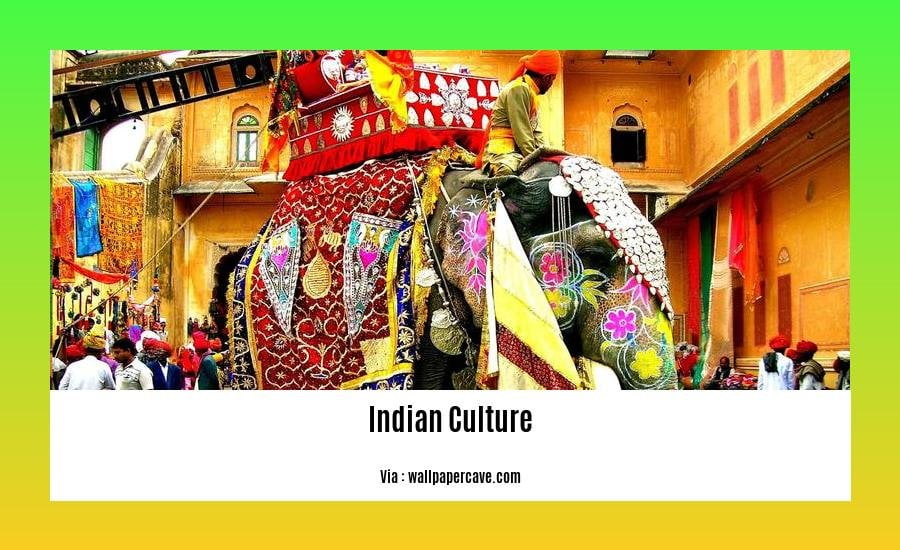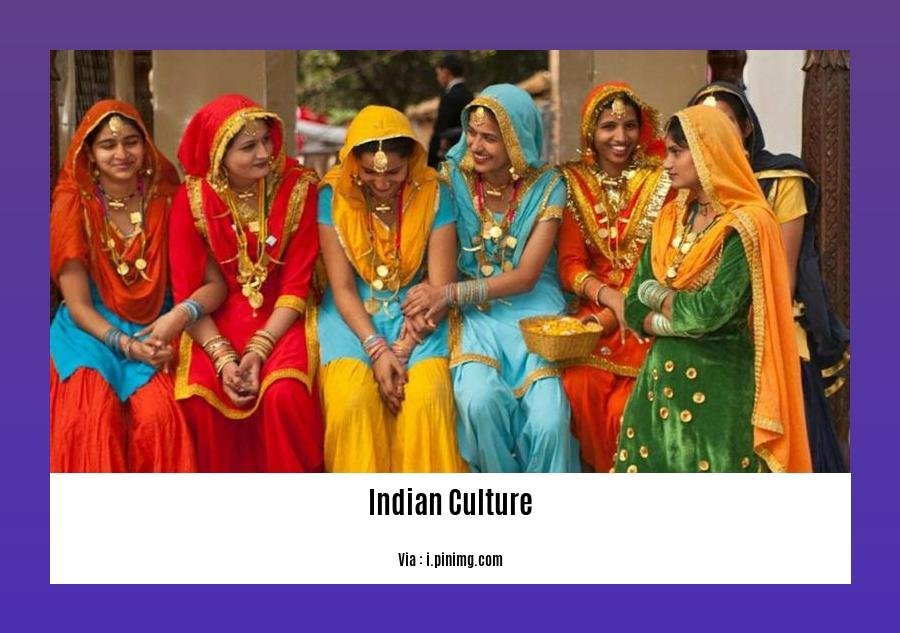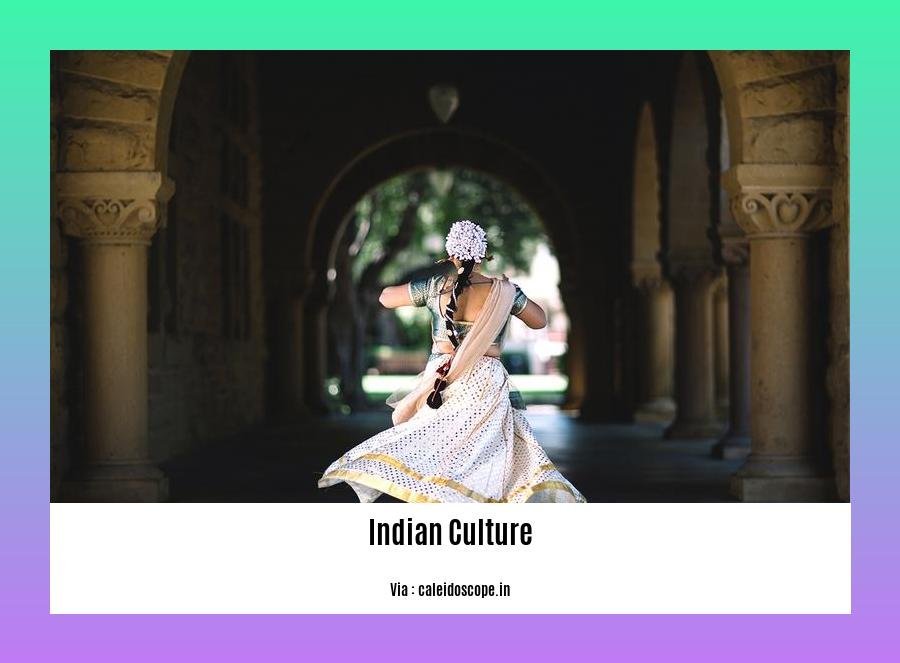Unveiling the Rich Tapestry: Fascinating Facts About South Indian Culture
Prepare to embark on a mesmerizing journey into the heart of South Indian culture as we delve into a world of enchanting traditions, artistry, and gastronomic wonders. Drawing upon extensive research and a deep passion for this vibrant region, we have curated a collection of captivating facts that shed light on the rich tapestry of South Indian heritage. Discover lesser-known aspects of this ancient culture and prepare to be enthralled by its intricate nuances. From the awe-inspiring art forms to the mouthwatering culinary delights, join us as we explore the wonders of South Indian culture like never before.
Key Takeaways:
- Southern India boasts 9 UNESCO World Heritage Sites, showcasing its rich cultural and historical heritage[^1^].
- The region is renowned for its diverse and delicious cuisine, including over 17 unique breakfast dishes[^2^].
- The first known literature from Southern India dates back over two thousand years, highlighting the region’s rich literary tradition[^1^].
- The South houses the world’s wealthiest temple, showcasing its cultural and religious significance[^2^].
- Southern India accounts for 75% of India’s coconut production, underscoring its agricultural importance[^1^].
Sources:
- South Indian culture – Wikipedia[^1^].
- 7 Facts You Never Knew About Southern India[^2^].
Facts About South Indian Culture

Southern India is a treasure trove of cultural wonders, steeped in history and bursting with vibrant traditions. From UNESCO World Heritage Sites to mouthwatering culinary delights, this region offers a captivating glimpse into the rich tapestry of South Indian culture. Let’s delve into some fascinating facts that highlight the uniqueness and beauty of this diverse region.
A Heritage of UNESCO World Heritage Sites
South India boasts an impressive collection of 9 UNESCO World Heritage Sites, showcasing its rich cultural and historical heritage. These sites span across the states of Andhra Pradesh, Karnataka, Kerala, Tamil Nadu, and Telangana, offering a remarkable display of architectural marvels, ancient temples, and exquisite craftsmanship. Each site tells a unique story, transporting visitors back in time and leaving them in awe of the region’s cultural legacy.
A Gastronomic Paradise
One cannot explore South Indian culture without indulging in its diverse and delicious cuisine. The region is renowned for its mouthwatering culinary offerings, with a staggering array of flavors, spices, and ingredients. The South Indian breakfasts are truly a delight, with over 17 dishes that are unique to the area. From fluffy idlis and crispy dosas to savory pongal and tangy sambar, each bite is a celebration of taste and tradition.
Literary Traditions Through the Ages
The literary traditions of Southern India are as ancient as they are exceptional. The first known literature from this region dates back to over two thousand years, highlighting the region’s rich literary tradition. Tamil Sangam literature, Kannada inscriptions, Telugu poetry, and Malayalam works all contribute to the literary tapestry of South India. Through these literary treasures, one can explore the profound wisdom, artistic expression, and cultural values that have shaped the region over centuries.
The Epitome of Spiritual Grandeur
Southern India reverberates with spiritual energy, with countless temples dotting the landscape. The richest temple in the world, Padmanabhaswamy Temple, can be found here, showcasing the cultural and religious significance of the region. These temples are not only architectural marvels but also serve as centers of devotion and cultural expressions. Intricate carvings, vibrant festivals, and soul-stirring rituals form an integral part of the South Indian religious experience.
The Land of Coconuts
When it comes to agriculture, Southern India holds immense importance. This region accounts for a staggering 75% of India’s coconut production, emphasizing the agricultural significance and abundance of coconuts in South Indian culture. Coconuts are a staple ingredient in the region’s cuisine, rituals, and daily life. Their versatility and nutritional value make them a symbol of prosperity and well-being in the region.
In conclusion, South Indian culture is a tapestry woven with fascinating facts and enchanting traditions. From its rich heritage and delectable cuisine to its literary legacy and spiritual grandeur, this region offers a captivating blend of history, art, and customs. Exploring South Indian culture is like embarking on a journey of discovery, unearthing hidden gems and immersing yourself in the vibrant traditions that define this diverse region.
Sources:
1. South Indian culture – Wikipedia[^1^].
2. 7 Facts You Never Knew About Southern India[^2^].
Here are some interesting facts about Ontario that you might not know! You’ll be amazed by the rich history and stunning landscapes this Canadian province has to offer.
Discover the stories of famous Albertans who have left a lasting impact on the world. From accomplished athletes to influential artists, these individuals have made Alberta proud with their remarkable achievements. Click here to explore their inspiring tales.
Significance of Classical Dance Forms in South Indian Culture

South Indian culture is a vibrant tapestry of traditions, arts, and culinary delights. Within this rich cultural landscape, classical dance forms hold immense significance, serving as both a form of artistic expression and a means of storytelling. Let’s delve into the captivating world of South Indian classical dance forms and explore their profound impact on the region’s culture.
Bharatanatyam: A Sacred Temple Dance
One of the most renowned South Indian classical dance forms is Bharatanatyam. This ancient dance originated in Tamil Nadu around 1000 BC, originally performed as a temple dance in devotion to the gods. Inspired by the intricate sculptures in the Chidambaram temple, Bharatanatyam combines three key elements: Nritta (rhythmic dance movements), Nritya (expressive dance), and Natya (dramatic storytelling). It is a dance form that requires years of training and mastery, with the Abhinaya Darpana serving as an important text for understanding its technique and grammar of body movement.
Mohiniyattam: The Dance of Enchantress
Another captivating South Indian classical dance form is Mohiniyattam, which hails from the state of Kerala. Known as the “dance of the enchantress,” Mohiniyattam focuses on natural and realistic facial expressions, graceful gestures, and fluid movements. It embodies femininity and narrative storytelling, often depicting mythological tales and social themes. Through its delicate and precise movements, Mohiniyattam holds cultural significance by preserving Kerala’s artistic heritage and captivating audiences with its ethereal charm.
Kathakali: Bridging Ritual Art Forms
Originating in Kerala, Kathakali is an ancient classical dance form that integrates various ritual art forms, including temple rituals, martial arts, and religious storytelling. It is characterized by its vibrant, extravagant costumes, elaborate makeup, and distinctive facial expressions. Kathakali performances are renowned for their dynamic movements, powerful footwork, and mudras (hand gestures) that convey intricate emotions and portray mythological stories. This elaborate dance form serves as a cultural treasure, bridging Kerala’s religious and artistic traditions.
Odissi: Traced to Ancient Caves
The state of Odisha is home to the elegant classical dance form of Odissi. Traced back to the caves of Udayagiri-Khandagiri, Odissi is steeped in rich history and mythology. Its graceful movements, intricate footwork, and fluidity reflect the essence of Odisha’s art and culture. With its unique blend of sensuality and spirituality, Odissi captures the essence of devotion, love, and storytelling, making it a significant form of expression in South Indian culture.
The Cultural Tapestry: The Wider Picture
South Indian classical dance forms, including Bharatanatyam, Mohiniyattam, Kathakali, and Odissi, are deeply intertwined with the region’s cultural fabric. They not only offer entertainment but also serve as vehicles for storytelling and expression. Rooted in ancient texts like the Natya Shastra, these dance forms exemplify the foundations of music, dance, and literature in India. Their evolution has given rise to mesmerizing dance dramas, where music, dance, and acting synergize to create a form of total theater.
With their rich heritage, these classical dance forms continue to captivate audiences worldwide by showcasing the cultural diversity and artistic brilliance of South India. They play an integral role in preserving and promoting the region’s traditions, making them invaluable gems in the vast treasure trove of South Indian culture.
Key Takeaways:
– Bharatanatyam, originating in Tamil Nadu, is an ancient temple dance form that combines rhythmic movements, expressive dance, and dramatic storytelling.
– Mohiniyattam, hailing from Kerala, focuses on natural facial expressions and graceful gestures, depicting mythological tales and social themes.
– Kathakali, also from Kerala, integrates various ritual art forms and portrays mythological stories through vibrant costumes, elaborate makeup, and powerful movements.
– Odissi, found in Odisha, embodies the essence of devotion, love, and storytelling through its graceful movements and fluidity.
– South Indian classical dance forms are not only for entertainment but also serve as vehicles for storytelling, cultural expression, and preservation of traditions.
Sources:
– Darbar – South Indian classical dance styles: Bharatanatyam and more
– Prepp – Indian Classical Dance Forms – Art and Culture Notes
Rich Culinary Traditions of South India
South India is a region known for its diverse and vibrant culture, which extends to its rich culinary traditions. The flavors and ingredients of South Indian cuisine are a reflection of the region’s geography, history, and cultural diversity. From aromatic spices to unique cooking techniques, the culinary heritage of South India is a true delight for food enthusiasts. Let’s delve into some fascinating facts about the rich culinary traditions of South India.
The Melting Pot of Flavors from Five States
South Indian cuisine encompasses the culinary traditions of Tamil Nadu, Andhra Pradesh, Karnataka, Kerala, and Telangana, as well as the union territories of Lakshadweep, Pondicherry, and the Andaman and Nicobar Islands. Each of these regions has its distinct flavors, ingredients, and cooking styles, adding to the vibrant tapestry of South Indian cuisine.
Spices, the Essence of South Indian Cooking
One cannot talk about South Indian cuisine without highlighting the importance of spices. Cinnamon and cardamom are two crucial spices used in many South Indian dishes, infusing them with a unique and tantalizing aroma. Whether it’s the rich masala curries or the fragrant rice dishes, spices are the essence of South Indian cooking.
Rice, the Staple Grain of South Indian Cuisine
Rice holds a special place in South Indian cuisine as the staple food. It serves as the foundation for a variety of dishes, from fluffy idlis and crispy dosas to flavorful biryanis. The coastal regions, specifically Kerala and Karnataka, take rice a step further by incorporating coconut into their recipes, adding a creamy and tropical touch to the dishes.
Regional Delicacies That Leave You Craving for More
One of the most fascinating aspects of South Indian cuisine is the diversity of dishes across various regions. Each state boasts its own unique dishes, snacks, light meals, and desserts. From the fiery flavors of Andhra Pradesh to the rich and coconut-infused dishes of Kerala, the culinary journey through South India is a treat for the taste buds.
Highlights of South Indian Culinary Delights
South Indian cuisine is renowned for its culinary masterpieces, and some dishes have gained international fame. Hyderabadi biryani, with its aromatic blend of spices and fragrant long-grain rice, is a beloved dish that captivates food lovers worldwide. Andhra Pradesh is known for its spicy and flavorful curries, while the region is also famous for its pickles, which pack a punch of tangy and spicy flavors.
A Blend of Flavor and Heritage
South Indian cuisine reflects the rich cultural heritage of the region, deeply rooted in tradition and history. The cuisine’s connection to the Dravidian ethnic and linguistic identity adds another layer of depth to its flavors. Whether it’s the traditional dishes prepared for festivals or the use of fresh and seasonal ingredients, South Indian cuisine is a testament to the region’s cultural richness.
Key Takeaways:
- South Indian cuisine encompasses the culinary traditions of Tamil Nadu, Andhra Pradesh, Karnataka, Kerala, and Telangana, as well as the union territories of Lakshadweep, Pondicherry, and the Andaman and Nicobar Islands.
- Important spices used in South Indian cooking include cinnamon and cardamom, infusing dishes with their unique aroma.
- Rice is the staple grain in South Indian cuisine, with coconut playing a significant role in Kerala and coastal regions of Karnataka.
- Each region within South India showcases its own distinctive dishes, snacks, light meals, and desserts.
- Famous South Indian dishes include Hyderabadi biryani, spicy aromatic curries in Andhra Pradesh, and pickles.
- South Indian cuisine reflects the region’s cultural heritage, closely linked to the Dravidian ethnic and linguistic identity.
SOURCES
– Chef Reader – Exploring South Indian Culture: Traditions and Customs
– Wikipedia – South Indian cuisine
Famous festivals celebrated in South India
South India is a land of vibrant culture and diverse festivals that are deeply rooted in tradition and religion. These festivals capture the essence of South Indian culture, bringing communities together to celebrate and rejoice. Here are some of the most famous festivals celebrated in South India:
Each festival has its own unique significance and rituals, showcasing the rich cultural tapestry and religious diversity of South India. Let’s delve into some fascinating facts about these festivals:
Onam: Celebrating Prosperity and Fertility
Onam is a festival celebrated during the harvest season in Kerala. It symbolizes prosperity and fertility, bringing people from different castes, communities, and religions together. One of the highlights of this festival is the grand feast called ‘Onam Sadhya,’ which consists of a variety of traditional dishes served on a banana leaf.
Pongal: Honoring the Harvest
Pongal is the most famous festival in Tamil Nadu, celebrated as a four-day harvest festival in the middle of January. It is a time when people express their gratitude to the Sun God for bountiful harvests. The festival is marked by the preparation of a special dish called Pongal, made from newly harvested rice.
Thrissur Pooram: A Grand Spectacle
Thrissur Pooram is an annual festival celebrated at the Vadakkunnathan Temple in Thrissur, Kerala. It is known for its grandeur and features a magnificent procession of decorated elephants, accompanied by traditional music and fireworks. The festival attracts thousands of spectators from all over the world.
Hampi Festival: Revisiting History
Hampi Festival, also known as the Vijaya Festival, is celebrated in the historic town of Hampi in South India. It commemorates the times of the rule of Vijaynagara and includes special performances like music and dance. The festival provides a glimpse into the glorious past of the region.
Mysore Dasara: Triumph of Good Over Evil
Mysore Dasara is a ten-day festival celebrated in Mysore, Karnataka. It signifies the victory of good over evil and is marked by a grand procession of beautifully decorated elephants, cultural performances, and a spectacular display of fireworks. The festival showcases the rich heritage of Mysore and its royal traditions.
Chithirai Thiruvizha: A Celestial Wedding
Chithirai Thiruvizha is a month-long festival held in the city of Madurai, Tamil Nadu. It reenacts the celestial wedding of Lord Sundareswarar (Lord Shiva) and Goddess Meenakshi. The festival attracts thousands of devotees from all over the world, who come to witness the grand wedding celebrations.
Vishu: Welcoming the New Year
Vishu is celebrated in Kerala and marks the beginning of the Malayalam New Year. The festival is known for its elaborate feasts, traditional rituals, and the Vishu Kani, which is a special arrangement of auspicious items displayed on the day of Vishu. It is a time for new beginnings and hope for the year ahead.
Ugadi: Embracing the New Year
Ugadi is observed in Andhra Pradesh, Telangana, and Karnataka as the Telugu and Kannada New Year. It is celebrated with traditional rituals, special dishes, and the reading of Panchanga, which is an astrological almanac. Ugadi is a symbol of new beginnings and a time to embrace the coming year with positivity.
Key Takeaways:
– South India is known for its vibrant culture and diverse festivals.
– Onam and Pongal are popular harvest festivals celebrated in Kerala and Tamil Nadu, respectively.
– Thrissur Pooram and Hampi Festival are renowned for their grandeur and historical significance.
– Mysore Dasara showcases the rich heritage of Karnataka.
– Chithirai Thiruvizha reenacts the celestial wedding of Lord Sundareswarar and Goddess Meenakshi.
– Vishu and Ugadi mark the beginning of the Malayalam and Telugu/Kannada New Year respectively.
Sources:
– Travelogy India: Onam
– Travel Triangle: Pongal
FAQ
Q1: What are some UNESCO World Heritage Sites in South India that showcase its cultural and historical heritage?
A1: Some of the UNESCO World Heritage Sites in South India include the Mahabalipuram Group of Monuments, Brihadeeswarar Temple, Group of Monuments at Pattadakal, and the Great Living Chola Temples[^1^].
Q2: How many breakfast dishes are unique to the South Indian region?
A2: The South Indian region is known for having more than 17 unique breakfast dishes[^1^].
Q3: What is the origin and inspiration behind Bharatanatyam, a classical dance form from South India?
A3: Bharatanatyam originated in Tamil Nadu around 1000 BC and was originally a temple dance inspired by sculptures in the Chidambaram temple[^2^].
Q4: What are the different elements of Bharatanatyam, a South Indian classical dance form?
A4: Bharatanatyam combines three elements of classical dance: Nritta (pure dance), Nritya (expressive dance), and Natya (dramatic dance)[^2^].
Q5: Which are some of the popular festivals celebrated in South India?
A5: Some popular festivals celebrated in South India include Onam, Pongal, Thrissur Pooram, Hampi Festival, Mysore Dasara, Chithirai Thiruvizha, Vishu, and Ugadi[^3^].
- SYBAU See You Baby Meaning: Gen Z Slang Evolves - July 1, 2025
- Unlock Your Inner Youth: Lifestyle Secrets for a Vibrant Life - July 1, 2025
- Decode SYBAU Meaning: Gen Z Slang Explained - July 1, 2025






